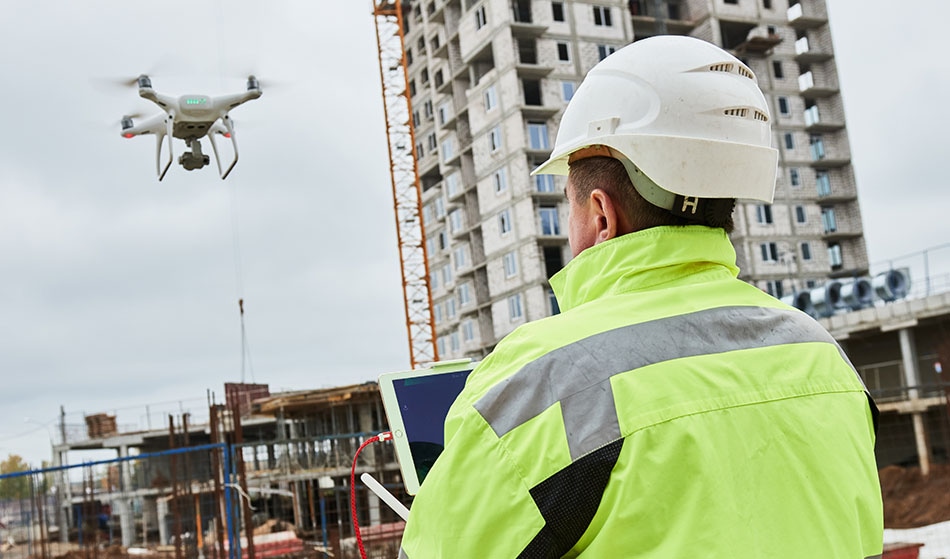 By Isabelle Robinson, M.Sc.Apr 2 2018
By Isabelle Robinson, M.Sc.Apr 2 2018 Image credit: Dmitry Kalinovsky/Shutterstock
Image credit: Dmitry Kalinovsky/Shutterstock
With rapid increases in technology, consumers can now purchase commercially launched drones at an affordable price.
Market research by Tractica suggests that globally, consumer drone unit shipments will increase substantially to 67.7 million by 2021. This rising popularity of the technology has been attributed to their usefulness. Drones have an ever-increasing number of applications such as aerial mapping, security monitoring, photography, racing and emergency response investigations.
However, this surge of popularity also increases the risk of collisions, and the aerospace sector is concerned. In 2016 the number of ‘near misses’ between drones and aircraft was a frightening 69. This is a considerable increase from 2014, in which only six were reported.
The aerospace sector is not the only industry that could be affected by increased use of unmanned aerial vehicles (UAV’s). Both transport and power, and energy infrastructure could be subject to costly damage and disruption if hit by a drone.
Some examples of this include a drone that crashed into power lines in Sichuan, China in 2016, causing a 6-hour blackout. In the same year, a drone collided into a nuclear power plant in South Africa and another hurtled into the side of one of the carriages of the Flying Scotsman, a heritage locomotive, in the UK.
The Civil Aviation Authority has acknowledged that most drone collisions are due to amateur operator error and therefore it is the highest risk to critical infrastructure. The Royal Aeronautical Society explains that “as the number of drones increases, so does the risk of accidents.” It has been identified that even trained drone operatives can lose control of the UAV due to technical faults or human error.
In addition to this, there is always the worry that drones can be used for terrorist acts or with the intent to cause harm. Theoretically, a malicious individual or group could launch an attack on critical infrastructures, such as roads, bridges or even a nuclear cooling tower to spread panic and disruption.
It is imperative, therefore, that any organization possessing assets such as buildings, systems or employees, that could be impacted by a drone collision, must consider the effects of such an event occurring.
Therefore, Dr. Graeme Anderson and Andrew Chadwick from Frazer-Nash Consultancy have developed computer modeling tools that can strengthen the understanding of the potential outcomes if a drone were to collide with critical national infrastructure.
Though only a few studies have researched into the potential effects of drone impacts, many have been undertaken on the impact of bird strikes on aircraft. By using the same modeling technique, Frazer-Nash has created computer modeling and analysis tools that can indicate the potential outcomes of drone strikes. This is the first stage of understanding the risks drones could have on an organizations infrastructure. It can quantify the risk of an impact and aid in stakeholders’ understanding of how these assets, systems, and people can be affected by a variety of drones.
In addition to this, the Frazer-Nash analysis is more flexible, quicker and less costly than physical testing. It can look at multiple scenarios under numerous impact conditions to produce the risk of impact. Modeling can also identify fire risks and failure modes. The model can run numerous situations and find the failure mode of the asset which would be impacted the most if struck by a drone.
This type of modeling has obvious benefits to industries with the most notable being able to produce a risk profile that can provide a general idea of the amount of investment needed to mitigate the effects of a UAV collision. The most effective way to do this is at the design stage, where changes can be made easily to protect the asset.
There are several ways that drone strikes can be mitigated and the amount needed would depend on the risk profile and the consumer's circumstances. While multiple measures could be employed, some organizations may want to apply a more aggressive solution, such as anti-drone bazookas that can shoot down and capture the drone.
It should be noted that while the media keeps drone collisions at the forefront of the public eye, it is plausible that the risk of drone collision to infrastructure could be overstated. It is important to model potential scenarios of a drone strike because, more often than not, a drone will be more damaged than the asset after a collision.
The only way to identify the potential impact of drone strikes on critical infrastructure is to model them. The importance of understanding and quantifying the risk of potential collisions is vital for managing and mitigating the potential threats and allowing smooth operation.
This story is reprinted from material from theengineer.com, with editorial changes made by AzoNetwork. The original article can be found here.
Disclaimer: The views expressed here are those of the author expressed in their private capacity and do not necessarily represent the views of AZoM.com Limited T/A AZoNetwork the owner and operator of this website. This disclaimer forms part of the Terms and conditions of use of this website.